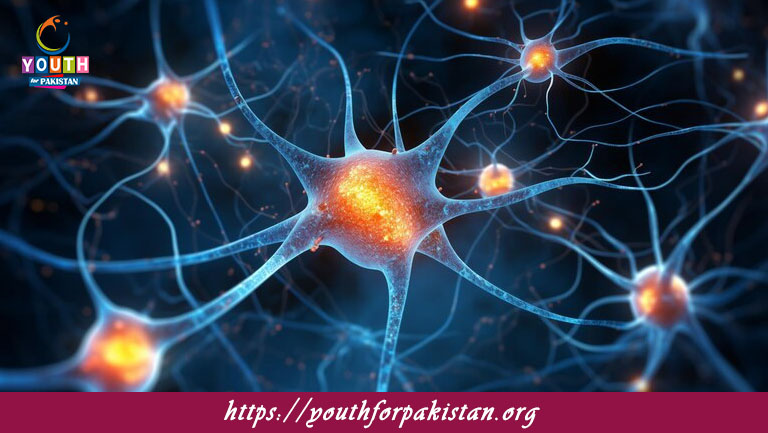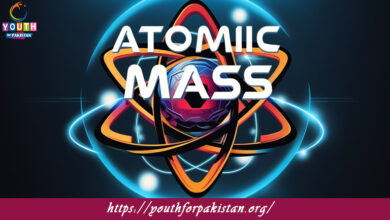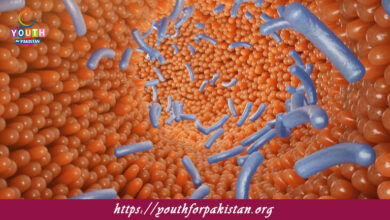Nervous System MDCAT MCQs with Answers

Welcome to the Nervous System MDCAT MCQs with Answers. In this post, we have shared Nervous System Multiple Choice Questions and Answers for PMC MDCAT 2024. Each question in MDCAT Biology offers a chance to enhance your knowledge regarding Nervous System MCQs in this MDCAT Online Test.
Which part of the nervous system includes the brain and spinal cord?
a) Peripheral nervous system
b) Autonomic nervous system
c) Central nervous system
d) Somatic nervous system
Which type of neuron carries signals away from the central nervous system?
a) Sensory neurons
b) Motor neurons
c) Interneurons
d) Efferent neurons
What is the primary function of the cerebellum?
a) Regulate emotions
b) Control motor movements and coordination
c) Process sensory information
d) Maintain homeostasis
Which part of the brain is responsible for regulating heart rate and breathing?
a) Cerebrum
b) Thalamus
c) Hypothalamus
d) Medulla oblongata
Which division of the autonomic nervous system is responsible for the ‘fight or flight’ response?
a) Sympathetic nervous system
b) Parasympathetic nervous system
c) Enteric nervous system
d) Somatic nervous system
What is the function of the myelin sheath?
a) Protect the neuron
b) Speed up nerve impulse transmission
c) Store neurotransmitters
d) Maintain the neuron’s resting potential
Which part of the neuron integrates incoming signals and generates an action potential?
a) Dendrites
b) Cell body
c) Axon
d) Axon terminals
Which type of glial cell is responsible for producing cerebrospinal fluid?
a) Astrocytes
b) Oligodendrocytes
c) Ependymal cells
d) Schwann cells
Which structure connects the two hemispheres of the brain?
a) Corpus callosum
b) Thalamus
c) Hippocampus
d) Cerebellum
What is the primary role of the hypothalamus?
a) Regulate emotions and behavior
b) Process sensory information
c) Control autonomic functions like hunger and thirst
d) Coordinate voluntary movements
Which part of the brain is involved in memory formation?
a) Cerebellum
b) Hippocampus
c) Medulla oblongata
d) Pons
Which type of neuron is responsible for transmitting sensory information to the central nervous system?
a) Motor neuron
b) Sensory neuron
c) Interneuron
d) Efferent neuron
Which system is responsible for voluntary control of body movements?
a) Autonomic nervous system
b) Somatic nervous system
c) Enteric nervous system
d) Sympathetic nervous system
Which brain structure is involved in regulating circadian rhythms?
a) Pineal gland
b) Amygdala
c) Thalamus
d) Hypothalamus
What is the function of the blood-brain barrier?
a) Allow all substances to enter the brain
b) Protect the brain from potentially harmful substances
c) Facilitate rapid neurotransmitter release
d) Maintain electrolyte balance in the brain
Which part of the nervous system controls involuntary functions like digestion?
a) Central nervous system
b) Peripheral nervous system
c) Autonomic nervous system
d) Somatic nervous system
What is the function of the spinal cord?
a) Coordinate voluntary muscle movements
b) Process sensory and motor information between the brain and body
c) Regulate emotions
d) Control respiratory rate
Which type of neurotransmitter is involved in mood regulation and is often targeted by antidepressants?
a) Dopamine
b) GABA
c) Serotonin
d) Acetylcholine
What type of glial cell provides structural support and regulates the chemical environment around neurons?
a) Microglia
b) Schwann cells
c) Astrocytes
d) Oligodendrocytes
Which part of the brain controls the basic functions required for survival such as heart rate and breathing?
a) Cerebellum
b) Brainstem
c) Cerebrum
d) Thalamus
What is the role of the thalamus in the brain?
a) Control autonomic functions
b) Relay sensory and motor signals to the cerebral cortex
c) Regulate emotions
d) Store memories
Which structure is primarily involved in emotional responses?
a) Hippocampus
b) Amygdala
c) Medulla oblongata
d) Cerebellum
Which type of receptor detects pain?
a) Mechanoreceptors
b) Thermoreceptors
c) Nociceptors
d) Photoreceptors
What is the main role of the frontal lobe?
a) Processing visual information
b) Regulating emotions and decision-making
c) Coordinating motor movements
d) Receiving auditory information
Which of the following best describes the function of the medulla oblongata?
a) Control voluntary muscle movements
b) Regulate heart rate, blood pressure, and breathing
c) Process visual and auditory information
d) Coordinate complex motor activities
Which part of the brain is involved in processing sensory information from the body?
a) Occipital lobe
b) Parietal lobe
c) Temporal lobe
d) Frontal lobe
Which part of the brain is responsible for higher cognitive functions such as reasoning and problem-solving?
a) Cerebellum
b) Brainstem
c) Cerebrum
d) Limbic system
What type of information is processed by the occipital lobe?
a) Auditory
b) Visual
c) Sensory
d) Motor
Which of the following structures is a major pathway for communication between the right and left hemispheres of the brain?
a) Cerebellum
b) Corpus callosum
c) Thalamus
d) Hippocampus
What is the primary function of the parietal lobe?
a) Processing auditory information
b) Processing visual information
c) Integrating sensory information
d) Regulating motor functions
Which part of the brain is crucial for regulating body temperature and hunger?
a) Cerebellum
b) Hypothalamus
c) Amygdala
d) Medulla oblongata
Which type of glial cell is responsible for myelinating axons in the central nervous system?
a) Schwann cells
b) Oligodendrocytes
c) Ependymal cells
d) Astrocytes
What is the role of the Schwann cells?
a) Form the blood-brain barrier
b) Myelinate axons in the peripheral nervous system
c) Regulate cerebrospinal fluid
d) Support neuronal cell bodies
Which part of the nervous system controls reflex actions?
a) Central nervous system
b) Peripheral nervous system
c) Autonomic nervous system
d) Somatic nervous system
What is the role of the somatic nervous system?
a) Control involuntary functions
b) Regulate digestive processes
c) Facilitate voluntary muscle movements
d) Manage autonomic functions
Which neurotransmitter is primarily involved in muscle contraction?
a) Serotonin
b) Acetylcholine
c) Dopamine
d) Norepinephrine
What part of the neuron conducts impulses away from the cell body?
a) Dendrites
b) Axon
c) Axon terminals
d) Soma
Which structure is responsible for producing the myelin sheath in the peripheral nervous system?
a) Oligodendrocytes
b) Astrocytes
c) Schwann cells
d) Ependymal cells
Which brain structure is involved in controlling balance and motor coordination?
a) Cerebrum
b) Medulla oblongata
c) Cerebellum
d) Hypothalamus
What is the primary role of the limbic system?
a) Processing sensory information
b) Controlling motor movements
c) Regulating emotions and memory
d) Maintaining homeostasis
Which type of cell is responsible for immune defense in the central nervous system?
a) Astrocytes
b) Microglia
c) Oligodendrocytes
d) Schwann cells
Which part of the brain is involved in processing auditory information?
a) Occipital lobe
b) Parietal lobe
c) Temporal lobe
d) Frontal lobe
What is the main function of the cerebrum?
a) Regulate basic life functions
b) Process sensory information
c) Coordinate motor movements
d) Perform higher cognitive functions such as thinking and reasoning
Which part of the brainstem is responsible for relaying information between the cerebrum and cerebellum?
a) Medulla oblongata
b) Pons
c) Midbrain
d) Thalamus
What is the role of the axon in a neuron?
a) Receive incoming signals
b) Integrate and process signals
c) Transmit electrical impulses away from the cell body
d) Store neurotransmitters
Which structure is responsible for maintaining the blood-brain barrier?
a) Neurons
b) Astrocytes
c) Ependymal cells
d) Microglia
What is the role of the sympathetic nervous system?
a) Control ‘rest and digest’ functions
b) Facilitate ‘fight or flight’ responses
c) Regulate sleep and wakefulness
d) Manage sensory perception
If you are interested to enhance your knowledge regarding Physics, Chemistry, Computer, and Biology please click on the link of each category, you will be redirected to dedicated website for each category.





